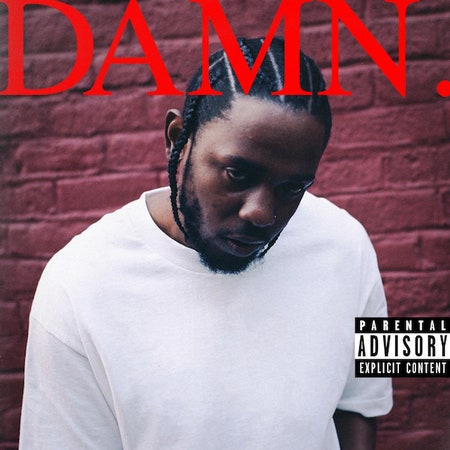Life is one funny motherfucker, it’s true. “DUCKWORTH.,” the last song on Kendrick Lamar's fourth studio album DAMN., tells a winding story about Anthony from Compton and Ducky from Chicago, whose paths cross first over KFC biscuits, and again, 20 years later, when Ducky’s son records a song about the encounter for Anthony’s record label. It’s a precious origin story, the stuff of rock docs and hood DVDs, and it’s delivered with such precision, vivid detail, and masterful pacing that it can’t possibly be true. But it’s a tale too strange to be fiction, and too powerful not to believe in—just like its author. Kendrick Lamar has proven he’s a master storyteller, but he’s been saving his best plot twist this whole time, waiting until he was ready, or able, to pull it off.
Storytelling has been Lamar’s greatest skill and most primary mission, to put into (lots of) words what it's like to grow up as he did—to articulate, in human terms, the intimate specifics of daily self-defense from your surroundings. Somehow, he’s gotten better. The raps on his fourth studio album DAMN. jab mercilessly like a sewing machine. His boyish nasal instrument is distinct and inimitable as it slithers up and down in pitch on “PRIDE.” Even when Lamar sounds like Eminem, or Drake, or OutKast, he sounds like himself, and he arguably outpaces them all as a writer. On “FEAR.,” he relays daily threats from his mom (“I’ll beat your ass, keep talking back/I’ll beat your ass, who bought you that? You stole it”) and from his neighbors (“I’ll probably die because I ain’t know Demarcus was snitching/I’ll probably die at these house parties fucking with bitches”) over low-slung blues stirred by The Alchemist. Lamar’s recitation is so effortless you wonder where he breathes, or if he does at all.
Kendrick is a relic of the mid-aughts rap blog era, where bedroom WordPress pages would post .zips of albums by amateurs. After years of such releases, Kendrick dropped a self-titled EP in 2009 that featured Big Pooh from Little Brother and elicited such Nah Right comments as “I like the beats on this” and “who da fuk?” Accolades swelled with each project; by 2011, he was considering signing with Dr. Dre; by 2013, he was playing “SNL” and touring with Kanye West. He came of age with his fans, and by 2015’s To Pimp a Butterfly, he put to music their chest-clenched frustrations. Ever the curtain-puller, he released an album of untitled and unmastered drafts and grew his hair out. His short absence, even after lending Taylor Swift a verse, has been made to feel longer by his media shyness and a surging tide of new rappers shuttled out daily.
